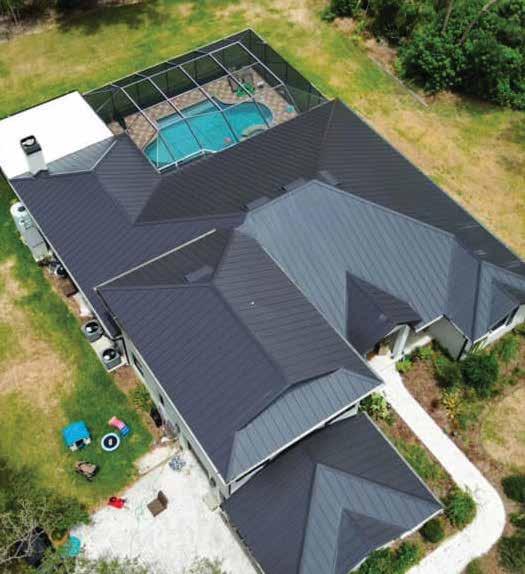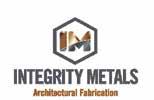A Publication of FRSA – Florida’s Association of Roofing Professionals

S.T.A.R. Awards Recipient
Blues Brothers Construction
Steep Slope Category



S.T.A.R. Awards Recipient
Blues Brothers Construction
Steep Slope Category

MFM introduces IB-3™ StormStopper Plus, designed specifically for the Florida roofing market. Stop storm damage in its tracks and offer your customers a qualified FORTIFIED PROGRAM product for years of worry-free service. This 50-mil, self-adhering roofing underlayment features a granulated surface and a non-removable selvedge edge for a secure seal on overlaps for whole roof protection.

IB-3 StormStopper Plus meets ASTM D 1970 and Florida Building Code FL# 41919.1.


FRSA-Florida Roofing Magazine Contacts:
For advertising inquiries, contact: Skip Heymann at: skip@floridaroof.com (800) 767-3772 ext. 127
All feedback and reprint permission requests (please include your full name and address) contact: Lisa Pate, Editor lisapate@floridaroof.com (800) 767-3772 ext. 157
Florida Roofing Magazine PO Box 4850 Winter Park, FL 32793-4850
View media kit at: www.floridaroof.com/ florida-roofing-magazine/ #FRSA #roofingprotects




















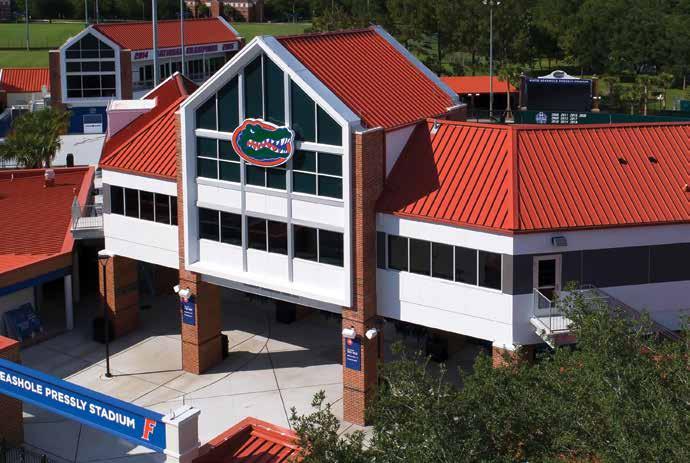


Equally strong and attractive , these metal roofing panels are available in Florida in our full line of PAC-CLAD painted steel, aluminum and Galvalume Plus coatings, ensuring that your roof will endure whatever comes its way. All panels are Miami-Dade County and Florida Building Code approved.

FRSA President Manny Oyola, Jr., Eagle Roofing Products
For many years, I have roofed throughout the Florida market and worked on many beautiful and unique roof tile installations. A favorite roof style among homeowners uses barrel roof tile that probably originated in the Mediterranean and Latin countries, which possessed an abundance of clay. Over the years, manufacturers sought to mimic the clay pan and cap motif, using molds and concrete to produce barrel and s-tile that evokes timeless appeal and became extremely popular.
As you can see from the photos, these high-profile tiles add a lot of old-world beauty and Mediterranean or southwest style to a roof.
The barrel tile (or pan and cap) also gives life to a turret or "witch's hat" style roof that you sometimes

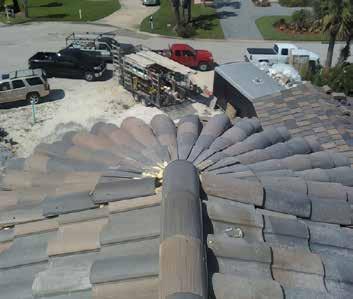
see on buildings with a round shaped roof. The professionals who create this look are real craftsmen that take pride in their work – it is not something that is installed every day. It’s a special skill set and a dying trade. It’s our job to train the next generation to create these beautiful roofs.

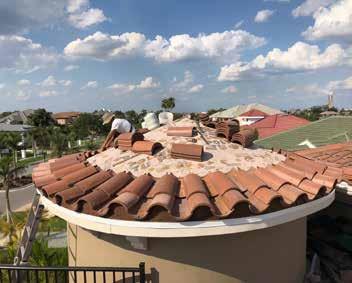
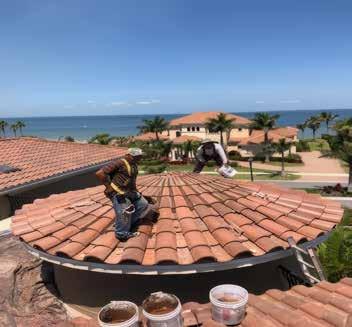
Another remarkable instance of craftsmanship is the installation of tile without the use of any hip or ridge cap or trim tile. This is called a closed mitered hip and ridge roof.
For this section, reference the FRSA-TRI 7th Edition High Wind Concrete and Clay Tile Installation Manual. FRSA members are entitled to one complimentary copy: if you don’t have one, please contact FRSA at kelly@floridaroof.com. This system does not incorporate the use of any type of structural support. To install:
1. All partial field-cut tile at the hip, ridge and valley shall be attached to the cap sheet and the adjacent tile with an approved roof tile adhesive or mortar.
2. The tile installed at the top of the ridge might have to be cut below the screw line to avoid seeing screw holes. The screw holes can also be filed with caulking to match the tile color.
3. Determine the desired overhang at the eave with a full tile and snap lines that go around the entire roof.
4. Snap chalk lines at all hips, ridge and valleys that meet at all points.
5. You’re going to install the ridge tile directly onto those lines marked continuously on all roof sides (see Figure 1); this is the line you would measure down from to the eave line.
6. Once that measurement is determined between those two points, go to the layout table (at right) and find the course spacing that will work best for this project.
Note: Don’t start marking any lines until you have measured and determined that the line will work completely around the entire roof.
All tiles must have a compound cut of 45 degrees in both directions when it’s installed in the hip, valley or ridge line.



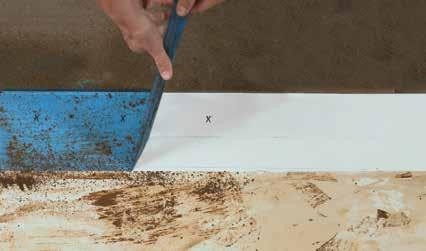

Carlisle SynTec Systems is dedicated to leading the industry by developing and manufacturing the most progressive and innovative roofing materials on the market. Every Carlisle product is designed to enhance building performance and contractor efficiency. Carlisle has pioneered productivity-boosting products such as SeamShield™ Technology, Self-Adhering Technology (SAT ™ ), Sure-Weld 16' TPO, 12' InsulBase with ReadyFlash Technology, and many others.
For more information on Carlisle’s productivity boosting products scan here
UTILIZING SPECIALLY MARKED MEASURING TAPE
To achieve optimum beauty, the area between the eave and ridge should be divided into equal tile courses when possible. Minimum 3” overlap must be maintained for all tiles unless design of tile precludes.
Measuring Tape
Notes:
Course Spacing “D”
Top Course Mark at 1-1/2” from Center of Ridge
Mark First Course for Desired Overhang
Note: Additional Considerations May Be Required for Venting
Consider Size and Placement of Gutter When Setting First Course Overhang
1. Using a full tile, determine desired overhang at eave and snap horizontal chalk line across roof at head end of tile or top of batten. Use of rain gutters and eave closures should be considered in determining tile overhang.
2. Snap a horizontal chalk line at the top of the roof 1-1/2” from the center of the ridge (adjust for direct deck).
3. With measuring tape, marked for maximum “exposed length” of tile being installed, measure vertically from the course nearest the ridge at either end of the roof (e.g., 14” for a 17” length tile).
4. If a mark on your tape does not fall exactly upon top line, move the tape to the left or the right until the next mark intersects the line.
5. Mark the deck at every mark on the tape.
6. Repeat this process at other end of roof.
7. Snap lines between marks on the deck. All courses will be equal with minimum recommended headlap maintained.
8. Repeat above steps on all roof planes.
9. Nail top of battens or tiles at each horizontal line. ROOF LAYOUT FOR

Using a full tile, determine desired overhang at eave and snap horizontal chalk line across roof at head end of tile. Use of rain gutters and eave closures should be considered in determining tile overhang. At the top of the roof deck, mark a reference point by measuring 1-1/2” from the center of the ridge, plus the distance of one full
Measure up the roof slope to the reference point and divide by the manufacturer’s maximum exposure in an effort to determine if the roof section will terminate with a full tile. Mark roof deck for each course of tile and snap chalk lines over entire section. If roof section does not terminate with a full tile at the ridge, decrease the course exposure in small increments (typically 1/4”) in
If the last course does not terminate with a full tile, cut to dimension, as required, and fasten with mechanical fastener or other
To ensure proper vertical alignment, determine the manufacturer’s stated maximum on-center spacing requirements and snap
For gable end roof sections, determine the proper distance from left and right rakes and mark the eave and ridge section to
Measure between the two marks and divide by the manufacturer’s stated maximum on-center spacing. If required, decrease the on-center spacing slightly in an effort to terminate with a full tile at the gable end(s). Ensure that the installed tiles are within the manufacturer’s minimum/maximum on-center spacing requirements.
Tiles are allowed, by ASTM C1167/C1492, for a plus-or-minus five percent variance from the manufacturer’s stated “nominal dimensions,” It is the installer’s responsibility to verify the “delivered” roof tile dimensions prior to commencing with roof layout and to ensure that the tile is installed within the manufacturer’s minimum headlap and on-center spacing requirements. Most diagonal-cut tiles will allow slight course exposure adjustments, typically 1/4” per tile.
This mitered hip and ridge installation requires a good deal of time and effort. The roofing professional who completes the project will have something to be proud of and will provide a distinctive roof with a look that stands out for many years to come. Let’s remember that as professionals, we must continue our legacy of sharing our roofing knowledge to the next generation.

Best wishes,
Drawing FHW‑26 depicts the application of all tile profiles. Unless otherwise noted, it would apply to either concrete or clay tiles.
NOTE – Drawings are for illustrative purposes and do not reflect all methods of installation. Please refer to written text.
© FRSA-TRI
For those who would like to know more about roof tile installation, attend FRSA’s Convention. A tile installation seminar will be presented on June 4.
Manny Oyola, Jr. FRSA President manuelo@eagleroofing.com
12/31/23
Added strength without any added weight.

ProVia metal roofing is constructed of highly durable 26-gauge galvanized steel—up to 30% more than the industry average. It’s also 3x lighter than asphalt shingles, so it’s easier to work with.
It’s the right thing to do.
6 Reasons to Partner with ProVia Metal Roofing
Alex Hernandez, Clark Roofing Company, was elected Chairman of the Board and Chad Collins, Roofing Corp of America, was elected Chairman of the Board-elect.
Jean-Paul Grivas, Ray Nolan Roofing; Christian Madsen, Madsen Roofing & Waterproofing Inc. and Diana Petersen, Red Pointe Roofing LP, were elected Vice Chairmen for two-year terms. Sherri Miles, J.D. Miles and Sons Inc., was elected Vice Chairman for a oneyear term.

Additionally, Tyler Allwood, Eagle Roofing Products, was elected to a three-year term and Tammy Hall, CFS Roofing Services LLC, was elected to a one-year term on NRCA’s Board of Directors.
ICP Group, a leading specialty chemical manufacturer in North America and global leader in professional building products, proudly welcomes Deb Lechner as its new Vice President of Marketing. Lechner will report directly to CEO Jay Doubman and serve on the Executive Leadership Team, acting as a strategic
marketing partner for the company. With a proven track record of developing and executing customerfocused marketing and business strategies, she will bring her expertise to ICP’s business units, supported by the company’s dedicated marketing team.
“We’re delighted to welcome Deb to ICP,” said CEO Jay Doubman. “With more than 30 years of experience in the building products industry, she brings a deep understanding of the market. Deb is results-oriented, customer-focused and brings strategic leadership to an already strong marketing team.”
Lechner is passionate about innovation that enhances customer experience, employee development and upholds the highest standards of integrity and excellence. A strong communicator and relationship builder, she is known for her ability to collaborate across teams and all levels of an organization to drive company-wide success.
“From some of my very first conversations with the ICP team, it was clear that we share a strong, long-term vision for the company,” Lechner said. “The marketing team is made up of some of the most insightful, creative people in the industry and I’m ready to dig in, support their existing strategies and expand their efforts. I can’t wait to get started.”
The Roofing Alliance announced this year’s winners of the Construction Management Student Competition. Winners were recognized at NRCA’s Industry Awards and Reception held during the International Roofing Expo in San Antonio in February.


The six finalist teams gave oral presentations as the final stage. This year, the teams were tasked with submitting a qualified bid package for the Embassy Suites by Hilton San Antonio Airport Hotel. The oral presentation scores were combined with the teams’ written proposal scores to determine the winning team.
The Roofing Alliance is proud to announce the top three schools and the best individual presenters:
■ First Place: Texas A&M University
■ Second Place: Auburn University
■ Third Place: Clemson University
Best Individual Presenters
■ Arjun Varadhan, Auburn University
■ Cheyenne Campbell, University of North Florida
RoofersCoffeeShop, the award-winning website where the industry meets for technology, information and everyday business, launches a one-of-a-kind speakers bureau for the roofing industry. Pulling from the enormous network of RoofersCoffeeShop (RCS), the speakers bureau is part of the overall RoofersCoffeeShop directory offering informational listings and contact information for professional speakers who offer insights and education with a firm understanding of the roofing industry.
“We are regularly asked if we know good speakers for association and company events, continuing education and trainings,” stated RoofersCoffeeShop President Heidi J. Ellsworth. “The RCS speakers bureau highlights exceptional speakers in a directory

format, offering insights into their past experience and overall roofing industry knowledge. We are very proud to offer these types of resources to the industry.”
The speakers bureau lives on the RCS directory where it is easily accessed at the top of the page. It features listings for industry speakers and RCS Influencers such as John Kenney, Cotney Consulting Group, Trent Cotney, Adams and Reese and Heidi J. Ellsworth of RoofersCoffeeShop. The directories include information on the speakers, their topics and contact information. It will continue to expand as the number of speakers grows. For those interested in joining the speakers bureau, reach out to Alex Tolle at alex@rooferscoffeeshop.com.
“The Coffee Shops continue to offer content that not only informs but educates, while providing associations, contractors and companies with the information and resources that they need,” concluded Ellsworth. “Our online community is all about connecting and networking for success.” Visit the RCS speakers bureau at www.floridaroof.com/rcs-speakers.
FrM











Trent Cotney, Partner, Adams and Reese LLP
In Florida, the intersection of lien foreclosures and arbitration is a complex area where legal interpretations play a crucial role. A key point to understand is that while the validity of a lien may be determined through arbitration, any judgment enforcing a foreclosure of that lien must be issued by a court of competent jurisdiction, as mandated by Florida Statutes § 713.21.
Arbitration often serves as a preferred method for resolving disputes in construction-related contracts. Florida courts have consistently upheld arbitration agreements and allowed arbitrators to make determinations regarding the validity of mechanic’s liens. In Village at Dolphin Commercial Center, LLC v. Construction Services Solutions, LLC, 143 So. 3d 942, 944 (Fla. Dist. Ct. App. 2014), the court affirmed that arbitration panels have jurisdiction over issues agreed upon by the parties, including lien validity.
This principle aligns with the strong public policy in Florida favoring arbitration, as seen in K.P. Meiring Construction, Inc. v. Northbay I & E, Inc., 761 So. 2d 1221, 1225 (Fla. Dist. Ct. App. 2000). Courts typically resolve challenges to arbitration agreements in favor of upholding them, highlighting their binding nature.
While arbitrators may determine whether a lien is valid, the enforcement of that lien through foreclosure remains exclusively within the court’s jurisdiction. This











practice was emphasized in Beach Resorts International, Inc. v. Clarmac Marine Construction Co., 339 So. 2d 689, 692 (Fla. Dist. Ct. App. 1976), where the court clarified that arbitration awards concerning lien claims do not authorize arbitrators to foreclose on liens. Instead, courts must adjudicate foreclosure rights following an arbitration award.
Similarly, in McDaniel v. Bernhalter, 405 So. 2d 1027, 1029 (Fla. 4th DCA 1981), the court reinforced that arbitration may resolve payment entitlement issues. However, the court retains the authority to enforce such awards through mechanic’s liens.

The case of Royal Palm Collection, Inc. v. Lewis, 2010 WL 2178757 (Fla. 4th DCA June 2, 2010), provides a notable example of these principles in action. Royal Palm Collection, Inc. (Royal), a general contractor, sought to foreclose on a construction lien and recover damages after disputes with homeowners George and Carlene Lewis.
Following arbitration, the arbitrator awarded Royal $38,528.88 but did not specifically address foreclosure rights. Despite affirming the arbitration award, the trial court denied Royal’s request to foreclose the lien, reasoning that the arbitrator’s award was silent on foreclosure. On appeal, the court reversed this decision, emphasizing that the court, not the arbitrator, must decide foreclosure rights. The appellate court ruled that Royal retained its right to seek foreclosure despite the arbitration process.
The legal landscape surrounding lien foreclosures and arbitration in Florida is shaped by several key principles:
■ Deference to arbitration agreements: Courts generally uphold arbitration agreements as binding when included in construction contracts.
■ Arbitration scope: Validity determinations of liens can be resolved in arbitration.
■ Court authority over foreclosure: Foreclosure judgments can only be issued by a court of competent jurisdiction, even when lien validity is determined in arbitration.
To protect the right to foreclose a construction lien, contractors should ensure compliance with statutory requirements. Florida law typically requires that actions to foreclose a lien be initiated within one year from the lien’s recording. Bringing such an action before a court within this timeframe preserves the right to enforce the lien through foreclosure.
Even when disputes are subject to arbitration, it is essential for parties to remember that arbitrators cannot foreclose liens. Instead, after arbitration resolves payment and validity issues, parties must seek a court order to foreclose on the lien.
Navigating lien foreclosures in Florida requires a clear understanding of the roles arbitration and courts play. While arbitration may settle disputes about lien validity and payment entitlement, only courts have the authority to enforce foreclosure. By adhering to legal timelines and preserving their rights, parties can effectively manage the complexities of lien enforcement and arbitration.

The information contained in this article is for general educational information only. This information does not constitute legal advice, is not intended to constitute legal advice, nor should it be relied upon as legal advice for your specific factual pattern or situation.
Trent Cotney is a Partner and Construction Team Leader at the law firm of Adams and Reese, LLP and FRSA General Counsel. For more information, you can contact him at trent.cotney@arlaw.com or by phone at 813-227-5501.
Adams and Reese LLP is a full-service law firm dedicated to serving the roofing industry. FRSA members can contact Trent Cotney to discuss and identify legal issues and to ask general questions through access to specialized counsel. They offer free advice (up to 15 minutes) for members. If additional legal work is required, members will receive discounted rates. This is a pro bono benefit provided to FRSA members only. Contact Trent at 813-227-5501.










John Kenney, CPRC, CEO, Cotney Consulting Group
Running a successful roofing business involves much more than installing quality roof systems. It requires mastering business fundamentals, people management, risk mitigation and leadership development. By focusing on these critical areas, roofing contractors can build resilient, profitable companies ready to thrive in a competitive and ever-changing industry.
This article explores the four pillars of roofing business excellence: financial literacy, workforce development, operational efficiency and leadership strategies. These foundational elements ensure dayto-day success and position roofing businesses for sustained growth and adaptability.
Financial management is the backbone of any successful roofing operation. Contractors must understand the financial metrics that signal business health, such as profit margins, cash flow and backlog. Unfortunately, many contractors overlook this critical aspect, leading to challenges like cash shortages, inefficient resource allocations or missed growth opportunities.
Tracking and benchmarking financial performance are essential steps for contractors. Regularly reviewing financial statements helps contractors track progress and pinpoint areas for improvement. Benchmarking industry data, such as NRCA’s financial surveys, provides insights into how a business compares to its peers. Metrics like operating costs, revenue projections and administrative expenses can guide strategic decision-making.
Financial tools and software designed for construction businesses can simplify processes like budgeting, forecasting and job costing. For instance, tracking job-specific profitability can reveal which projects are most lucrative and which require reevaluation. This data helps contractors avoid costly mistakes and focus on projects that align with their business strengths.
Additionally, understanding financial ratios – like debt-to-equity or quick ratios – can help contractors evaluate liquidity and operational efficiency. These insights ensure the business remains financially stable even during economic downturns.
An actionable tip for financial literacy is to develop a monthly review process to analyze key metrics and share these insights with the team. Transparent communication about financial goals and challenges
fosters a unified approach to achieving business success.
At the heart of every successful roofing business is its people. Effective people management, from field crews to office staff, ensures projects are completed safely, on time and within budget. Yet, roofing contractors face persistent challenges, including labor shortages, an aging workforce and shifting generational expectations.

Attracting and retaining talent requires more than competitive wages. Contractors must create a culture of safety and continuous learning. Training programs improve employee productivity and demonstrate a company’s commitment to its workforce. Offering certifications, apprenticeships or advanced skill training enhances performance and builds employee loyalty.
Mentorship programs are another effective tool for workforce development. Pairing experienced staff with newer employees fosters skill development, encourages collaboration and prepares the next generation of leaders. This mentorship model can be integral to succession planning, ensuring the business remains resilient as key team members retire or move on.
Providing regular feedback and recognition is equally important. Constructive performance reviews, paired with useful suggestions, help employees understand their strengths and areas for improvement. Recognizing achievements through bonuses, promotions or public acknowledgment boosts morale and engagement.
To address labor shortages, roofing contractors can also consider nontraditional recruitment strategies. Partnering with local trade schools, engaging in community outreach or offering internships can help attract fresh talent to the industry.
An practical tip for workforce development is to host quarterly training sessions focused on safety, technical skills and leadership development. These
sessions reinforce company values and demonstrate an ongoing investment in employee growth.
Operational efficiency ensures roofing projects are completed profitably and without unnecessary delays. This involves managing risks associated with contracts, compliance and unforeseen challenges like weather or material shortages.
Contracts are the foundation of every project. Roofing contractors must review agreements thoroughly to ensure terms align with their understanding of the job’s scope. Standardized contract templates and access to specialized construction legal firms can minimize disputes and clarify obligations. Contracts should explicitly define payment schedules, warranties and responsibilities to avoid misunderstandings.
Developing a crisis management plan is another crucial aspect of operational efficiency. A comprehensive plan should address potential crises like cybersecurity breaches, natural disasters or workplace accidents. It should include communication protocols, data protection measures and contingency strategies to ensure the business can respond swiftly and effectively.
Tracking performance metrics, such as safety records, job-specific profitability and project timelines, allows contractors to identify inefficiencies and make timely adjustments. Implementing a company scorecard to monitor these metrics on a per-job basis, rather than quarterly or annually, provides actionable insights that drive improvements.
Risk management extends beyond operations to include compliance with local regulations and safety standards. Roofing contractors must stay informed about industry changes, such as updated OSHA guidelines or building codes, to avoid penalties and maintain a strong reputation.
A usable tip for operational efficiency is to implement a job-cost tracking system. This system evaluates profitability in real-time, allowing project managers to address cost overruns early and ensure the job stays on budget.
Leadership is not only about managing day-to-day operations but also about setting a vision for the future. Roofing contractors investing in leadership development and growth strategies create businesses that adapt to changing market conditions and customer demands.
Educational opportunities are vital for leadership growth. These programs should provide valuable insights into strategic planning, financial management and operational excellence. Participating in these
programs helps contractors refine their leadership skills and gain new perspectives from industry peers.
Market differentiation is another key to sustained growth. Specializing in a niche, such as green roofs, complex commercial projects or historic restorations, reduces competition and attracts clients seeking expertise. Communicating professionalism and quality through marketing initiatives reinforces your brand and builds customer trust.
Building strong relationships with architects, general contractors and property managers creates repeat business opportunities. Transparency, reliability and consistent communication strengthen these connections, making your business a preferred partner.
Growth strategies should also include regular evaluation of risks and opportunities. Assessing the market landscape, analyzing customer needs and staying ahead of trends enable contractors to remain competitive. For example, adopting sustainable practices or leveraging new roofing technologies can position your business as an industry leader.
An actionable tip for leadership development is to schedule annual strategy meetings. These meetings provide an opportunity to assess the company’s position, identify growth opportunities and evaluate risks. Use these insights to refine your business plan and set actionable goals for the coming year.
Contractors who embrace the four pillars of business excellence – financial literacy, workforce development, operational efficiency and leadership – can build businesses that withstand challenges and thrive for generations. By refining the way you think about these core fundamentals, you can create a roofing business that achieves profitability and leaves a lasting legacy. Take action today by evaluating your current practices and identifying areas for improvement. Success in roofing isn’t just about installing great roofs – it’s about building a great business.
John Kenney, CPRC, has over 50 years of experience in the roofing industry. He started his career by working as a roofing apprentice at a family business in the Northeast and worked his way up to operating multiple Top 100 Roofing Contractors. As CEO, John is intimately familiar with all aspects of roofing production, estimating and operations. If you would like further information on this or another subject, you can contact John at jkenney@cotneyconsulting.com.
Mike Silvers, CPRC, Owner, Silvers Systems Inc. and FRSA Technical Director
The last several weeks have been extremely busy; maybe hectic would be a better word. We’re on the frontline on many issues – some that we’ve not faced before but are working with industry partners to ensure we can keep doing what we do best. Sadly, there are those that think they know more than we do about roofing systems we install every day.
Fortunately, FRSA’s had an opportunity to influence or offer additional language to make most of these items palatable for contractors. We do our best to stay in front of issues but at times, it’s challenging. This is especially true when the state Legislature is in session, the Florida Building Commission codes modification submission process is in full swing and several pressing issues coalesce at one time.
The Building Commission
Recently, we completed phase one of the code modification process that integrated changes made in the 2024 International Building Code (IBC) into the 2026 9th Edition Florida Building Code (FBC). Phase two is where members of the public (FRSA included) can propose modifications (mods) to be considered for incorporation into the new code. Submissions ended mid-February and, at the beginning of March, they were posted on the FBC website. I reviewed all 557 mods, looking for ones that merited our attention.
FRSA proposed 39 modifications, all approved by our Codes Subcommittee and the Codes Committee. From mods proposed by other entities, I pulled 162 for review during several upcoming meetings with the Codes Subcommittee to determine whether we support or oppose each change. As time permits, we will also seek approval from the Codes Committee. In between quarterly committee meetings, FRSA’s Board of Directors has given the Codes Subcommittee the authority to make decisions on FRSA’s behalf regarding these matters.
The group will present FRSA's positions to the Commission’s Technical Advisory Committees (TACs) during the first of two reviews scheduled for midto-late June. Moving forward, I will try to keep you informed on the progress of the changes – mods that we like and, just as importantly, those we don’t. This is a grueling process that takes most of the three-year code cycle to accomplish. We deeply appreciate the volunteers who devote their time and energy to make this process so successful. Often, we work with other industry partners to accomplish some of this work. Most recently, we’ve worked with the Asphalt Roofing Manufacturers Association (ARMA) on many of FRSA’s and ARMA’s modifications, as well as some submitted by others, that will continue to improve the performance of roof coverings in Florida. This is a process that we can take the lead on or one that is forced on us by folks – unhindered by their lack of experience and knowledge – who propose unreasonable and inneffective modifications.
Fund a scholarship today at www.FloridaRoof.com/charity or contact John Hellein at 800-767-3772 ext. 123
Speaking of grueling processes, the legislature is in session and the ride is fast and can get a little bumpy at times. Much like the building code, it’s about looking at everything that can help and hurt you (a big job), taking positions and suggesting improved language. It is also a time when we can move our positions forward. I’ll mention a few of those positions here that have been on our radar recently. One thing we like and have been working on is adding the evaluation of roofto-wall connections to the roofing contractor license scope including training enhancement for contractors who want to perform such work. One of the things we don’t like is the attempt by some in the government to place their thumb on the scale, so to speak, concerning which roof coverings we or homeowners can choose.


A ND T R US T.
APOC Polyset AH-160 has been reformulated with a low global warming potential (GWP) blowing agent to meet the nationwide regulations while staying true to the features and benefits you are familiar with.
PROVIDES MORE SUPPORT FOR WALKABILITY THAN FASTENERS
VIRTUALLY ELIMINATES PENETRATIONS
SUPERIOR HOLDING POWER DURING WIND EVENTS
This two-component, polyurethane foam adhesiv adheres each individual tile in place with superior holding power compared to nails, screws, mortar and wire tie systems. Depending on roof pitch, it can be used without mechanical fasteners so it won’t puncture the waterproofing membrane or the roof deck

www.apoc .com | www.icpgroup.com info@icpgroup.com
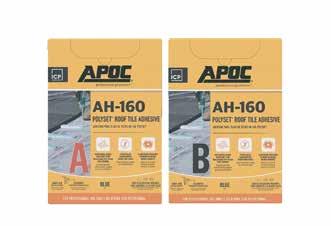
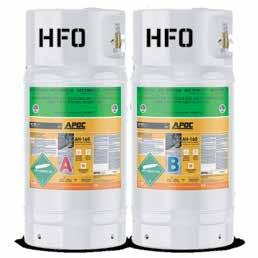

FRSA is collaborating with ARMA and other industry groups to keep all proven roof systems competing on a level playing field. Knowledgeable roofing industry professionals understand that there isn’t enough solid data on roof system failures to eliminate any roof type. We are extremely fortunate to have Chris Dawson, GrayRobinson, as our Legislative Counsel, doing great work on our behalf in Tallahassee. Also, a personal thanks to Ralph Davis, Streamline Roofing and Construction, Tallahassee for being available to testify on our behalf before the legislature. Because Ralph lives in Tallahassee, we often call on him last minute to testify on FRSA's behalf. He does an amazing job and represents us well.
I was recently in Tallahassee to be part of a panel for the Florida House Subcommittee on Industries and Professional Activities. The topic was on licensure and regulation affecting contractors. It was very interesting to hear where other professionals and the legislators stood on several issues at the meeting. I mentioned one item that is an impediment to new contractors is the availability and cost of insurance. A topic that most of the other panelists reinforced. The appearance also gave me a chance to pitch our roofto-wall connection issue to the subcommittee that will be hearing it. So far, so good.

In the last two issues of Florida Roofing magazine, I dedicated my column to the comments and actions on roof type selection by OIR and various House and Senate hearings mentioned above. These discussions have been the cause of the most recent roof covering issues. Since then, an attempt by OIR to rewrite the OIR-B1-1802 Adopted by Rule 69O-170.0155 wind mitigation form has been seen by many as a chance to push a self-serving agenda that would be misleading and harmful for Florida’s property owners. OIR’s attempts to make changes are clearly well intended but may be relying on slanted or incomplete information. FRSA will carefully monitor related activities and offer our opinions and relative information at every opportunity as this process moves forward.
The roof covering issue has focused a lot of attention on the roofing industry, both locally and nationally. We have presented programs on the subject to some of our local affiliates and, more recently, at the Roofing Industry Committee on Weather Issues annual meeting held in Orlando. It will continue to be a hot topic during the coming months. FRSA will continue to make our presence known in the discussions that will influence this issue and many others going forward.
FrM
Mike Silvers, CPRC is owner of Silvers Systems Inc., and is consulting with FRSA as Director of Technical Services. Mike is an FRSA Past President, Life Member and Campanella Award recipient and brings over 50 years of industry knowledge and experience to FRSA’s team.




























Experience the pinnacle of roofing technology with Stinger.
Combine EXO Underlayment, NailPac, and CN100B for the Ultimate Moisture Defense System.
Experimenta lo mejor de la tecnología para techos con Stinger.
Combina el revestimiento EXO, NailPac y la clavadora CN100B para lograr el Mejor Sistema de Defensa Contra la Humedad.






















































































































FRSA Self Insurers Fund is the best Workers’ Compensation carrier for Roofing Contractors in Florida.
The Fund’s exceptional service and dividend returns are unmatched in the industry.
In 2023, Fund members received $5 million in Dividends and in June another $2 million based on 2023 performance –while workers’ comp rates are the lowest in history.
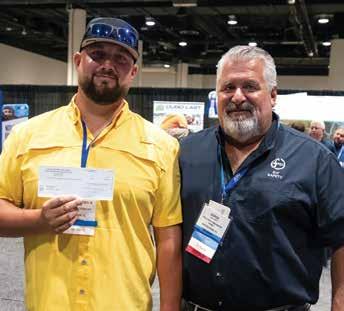
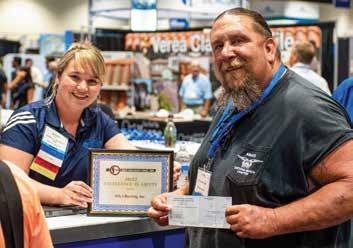
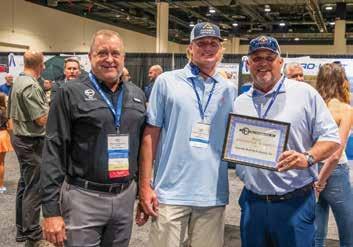

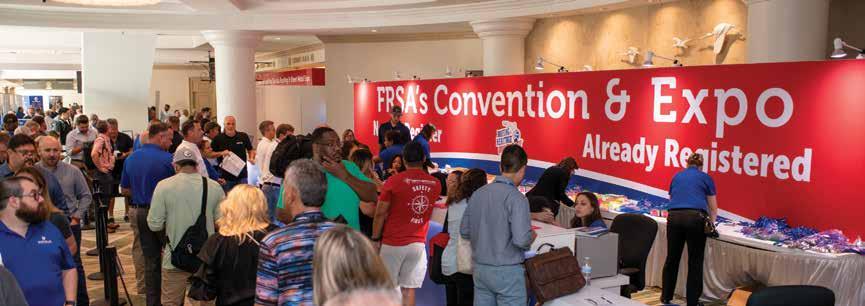

Thursday, June 5 | 11:00 am – 5:00 pm
Friday, June 6 | 10:00 am – 3:00 pm



In 2024, over 5,000 roofing and sheet metal contractors, building officials, architects and industry professionals registered for the Convention and Expo. The 2025 Expo is sold out with over 230 exhibiting companies offering the latest products and services to the industry.





JUNE 4 – 6


Check out items onsite at the Expo and bid from anywhere! Looking to donate? Visit www.floridaroof.com/donate to register and bid online.
Bidding starts on May 30 at 8:00 am and concludes on June 6 at 2:00 pm.

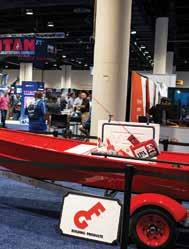
All proceeds benefit the industry through the FRSA Educational and Research Foundation.




The Expo is free for roofing contractors. For all non-exhibiting manufacturers, suppliers and distributors, there is a $295 per person fee to attend the Expo and a $995 per person fee for industry service providers to attend the Expo.


sponsored by GAF

FRIDAY, JUNE 6 11:00 am – 2:00 pm
Stop by the Lounge area for a cold beer, compliments of GAF.
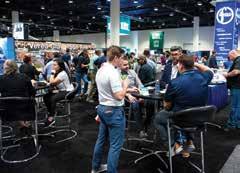
sponsored by Petersen | PAC-CLAD
THURSDAY, JUNE 5 | 11:00 am – 2:00 pm
FRIDAY, JUNE 6 | 11:00 am – 2:00 pm
Hungry? Grab a bite to eat at the Food Court located on the Expo floor, compliments of our lunch sponsor.

WEDNESDAY, JUNE 4

sponsored by Drexel Metals
Tenoroc Shooting Range Lakeland
JUNE 4 | 10:00 am – 1:00 pm
The tournament is comprised of several stations with a variety of shooting levels. Range fees, ammunition, lunch and prizes are included in the ticket price. Each participant must provide their own gun or arrange gun rental ahead of time.
REGISTRATIONS WILL BE LIMITED TO 75 PARTICIPANTS
$125 by May 1 | $175 after May 1.

sponsored by Walker Rep Group
Marina
Port Canaveral
JUNE 4 | 7:00 am – 1:00 pm

Boats carrying groups of six will set out along Florida’s beautiful East Coast to find the catch of the day. Check-in begins at 6:30 am with the tournament running from 7:00 am to 12:00 pm. Following the tournament, winners will be announced and graband-go lunches will be available.
REGISTRATION FEE INCLUDES BOAT, ROD AND REEL, TACKLE, BEVERAGES, LUNCH AND PRIZES. INDIVIDUAL REGISTRANTS WILL BE PAIRED AND SPACE IS LIMITED.
$175 by May 1 | $275 after May 1. Register a full boat of 6 people by May 1 for $1,000 | $1,400 after May 1.
by May 1 to save money and guarantee your spot.
sponsored by Acrisure and Sika Roofing
Falcon’s Fire Golf Club Kissimmee
JUNE 4 | 8:00 am – 1:00 pm
Falcon’s Fire Golf Club is recognized both regionally and nationally as one of the finest public Golf Courses in Orlando. Check-in begins at 7:00 am, with the tournament beginning at 8:00 am.
REGISTRATION INCLUDES GREEN FEES, CART, RANGE BALLS, REFRESHMENTS, CONTINENTAL BREAKFAST, LUNCH AND PRIZES. TEAMS ARE 4-PERSON SCRAMBLE FORMAT AND INDIVIDUAL REGISTRANTS WILL BE PAIRED. THIS TOURNAMENT SELLS OUT QUICKLY, SO REGISTER EARLY. REGISTRATIONS WILL BE LIMITED TO 128 PLAYERS ON A FIRST-COME, FIRST-SERVED BASIS.
$175 by May 1 | $225 after May 1.
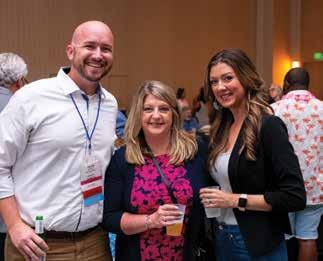
sponsored by Adams and Reese LLP, Carlisle SynTec Systems, Leap and Progressive Materials
WEDNESDAY, JUNE 4 | 5:30 pm – 7:00 pm
Join us as we kick off FRSA’s 103rd Convention. Food stations and an open bar at this FREE event create the perfect opportunity to network with industry peers.
WEDNESDAY, JUNE 4 | 3:30 pm – 5:30 pm
Join National Women in Roofing for an insight-filled session where you can network with other NWiR members and hear from women in the industry as they share their career experiences.
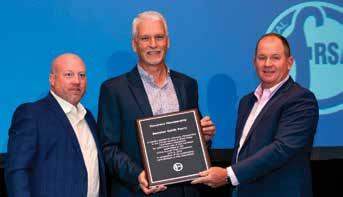


sponsored by Millennium Metals Inc
THURSDAY, JUNE 5 | 11:15 am – 1:00 pm
Elections for FRSA Officers and Directors will be held, Life and Honorary Memberships bestowed along with other industry awards and recognition of Foundation scholarship recipients.
sponsored by Gulfeagle Supply and Power Bolt and Tool Inc.
THURSDAY, JUNE 5 | 6:00 pm – 9:00 pm
Join us for FRSA’s San Juan Casino Party, an entertaining night of casino games, food stations, open bars, dancing and prizes. Casual tropical attire is encouraged. We’ll kick off the evening with FRSA Officer installation, the Campanella Award and recognition of S.T.A.R. Award recipients in an abbreviated presentation, leaving plenty of time for gambling and socializing.
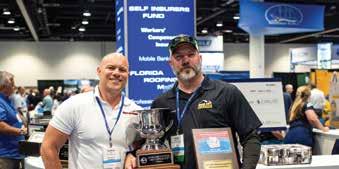



THURSDAY, JUNE 5 | 7:00 pm – 8:30 pm
Affiliate chapters from across the state will compete in a Texas Hold ‘Em tournament during the Casino Party to lead their Affiliate to victory. Proceeds benefit FRSA’s 2025 Charity of Choice, Foundation Scholarships.








sponsored by Certified Roofing Specialists Inc.
WEDNESDAY NIGHT, JUNE 4
5:30 pm – 9:00 pm

Kids will enjoy an evening of fun with an entertaining and interactive balloon show. Then it’s time to get creative in a cookie decorating extravaganza to show off their creative talents. Ticket includes dinner, entertainment and all supplies.

THURSDAY DAY, JUNE 5 | 9:00 am – 3:00 pm


THURSDAY, JUNE 5 | 9:00 am – 11:00 am
Choose to create either a candle or wax melts and a scented sachet of your own unique scent combination to take home. All supplies, morning beverages and muffins are included in the ticket price.

Wizards & Lizards will lead this hands-on tiedye workshop showing the kids how to fold, tie and dye their very own creations to take home. Ticket includes supplies, lunch and snacks.


THURSDAY NIGHT, JUNE 5 | 5:30 pm – 9:00 pm
FRIDAY, JUNE 6 | 9:00 am – 11:00 am


This hands-on workshop will make baking your own bread at home a breeze! A Gaylord chef will present several types of bread and the role of oils and herbs in breadmaking. Enjoy a hands-on experience with proper kneading techniques, decorations and toppings to create your own bread masterpiece. Beverages and breakfast pastries are included in the ticket price.
Back by popular demand – two giant game trucks packed with large screen TVs, the latest game consoles and a huge variety of video games including Mario Kart, Minecraft, Fortnite and other popular video games. Ticket price includes dinner, two hours of unlimited game play and bounce house access.

FRIDAY DAY, JUNE 5 | 9:00 am – 3:00 pm

Ready for some real fun? Here’s your ticket to competitive arcade-style games in a private room. Ticket price includes activities, lunch and snacks.

WEDNESDAY, JUNE 4
6:00 am – 5:00 pm | FRSA Registration Desk Open / Gaylord Palms Convention Center
7:00 am – 1:00 pm | Fishing Tournament / Sunrise Marina, Port Canaveral – sponsored by Walker Rep Group
8:00 am – 10:00 am | Seminar #1: ASCE 7 Wind Calculations Greg Keeler – 2.0 Hours G
8:00 am – 1:00 pm | Golf Tournament / Falcon’s Fire Golf Course sponsored by Acrisure and Sika Roofing
8:00 am – 2:00 pm | Seminar #2: CCN’s Contractor Bootcamp: KPI –Managing by the Numbers / Gary Cohen – 6.0 Hours – No CE credit
9:00 am – 10:00 am | Seminar #3: Advanced FRSA-TRI Tile Manual Paul Oleksak and David Eubanks – 1.0 Hour ADV
10:00 am – 1:00 pm | Clay Shooting Tournament / Tenoroc Shooting Range, Lakeland – sponsored by Drexel Metals
10:15 am – 12:15 pm | Seminar #4: Licensing Issues & Contracts Trent Cotney – 2.0 Hours L&R/BSP
10:15 am – 12:15 pm | Seminar #5: Metal Roofing: A Closer Look Bo Copeland – 2.0 Hours G
12:30 pm – 1:30 pm | Seminar #6: Low-Slope ASTM Standards Brian Chamberlain – 1.0 Hour G
12:30 pm – 1:30 pm | Seminar #7: Estimating the Right Way –Commercial / John Kenney, CPRC – 1.0 Hour BSP
1:45 pm – 2:45 pm | Seminar #8: Wind Mitigation Methods Mike Silvers, CPRC – 1.0 Hour WMM
1:45 pm – 2:45 pm | Seminar #9: OSHA Recordkeeping Requirements
Trent Cotney – 1.0 Hour BSP
3:30 pm – 5:30 pm | NWiR Table Talk Session
5:00 pm – 5:30 pm | VIP President’s Reception / Gaylord Atrium
5:30 pm – 7:00 pm | Welcome Reception / Gaylord Atrium sponsored by Adams and Reese LLP, Carlisle SynTec Systems, Leap and Progressive Materials
5:30 pm – 9:00 pm | Kids’ Program / Crazy Balloon Show & Cookie Decorating – sponsored by Certified Roofing Specialists Inc.
THURSDAY, JUNE 5
6:00 am – 5:00 pm | FRSA Registration Desk Open / Gaylord Palms Convention Center
7:00 am – 8:00 am | Seminar #10: Understanding Workers’ Comp Debbie Guidry, CPCU and Alexis Ayala – 1.0 Hour WC
7:00 am – 8:00 am | Seminar #11: KPI – Navigating by the Numbers Gary Cohen – 1.0 Hour – No CE Credit
7:00 am – 8:00 am | Seminar #12: Top Five Insurance Issues Tray Batcher – 1.0 Hour L&R
8:00 am – 11:00 am | ARCHITECT & BUILDING OFFICIALS PROGRAM Seminar #13: ASCE 7 Wind Calculations / Greg Keeler – 2.0 Hours G Low-Slope ASTM Standards / Brian Chamberlain – 1.0 Hour G
8:15 am – 9:15 am | Seminar #14: Ladder & Skylight Safety Kevin Lindley – 1.0 Hour WPS
8:15 am – 9:15 am | Seminar #15: Estimating the Right Way –Commercial / John Kenney, CPRC – 1.0 Hour BSP
8:15 am – 10:15 am | Seminar #16: Metal Roofing: A Closer Look Bo Copeland – 2.0 Hours G
9:00 am – 11:00 am | Ladies’ Program / Candle Crafting Workshop
9:00 am – 3:00 pm | Kids’ Program / Wizards & Lizards Tie-Dye Party sponsored by Certified Roofing Specialists Inc.
9:30 am – 10:30 am | Seminar #17: Google’s Silver Bullet: You! Dan Shurtz – 1.0 Hour – No CE credit
9:30 am – 10:30 am | Seminar #18: Attract & Retain Great People Marci LaRouech – 1.0 Hour – No CE credit
9:30 am – 10:30 am | Seminar #19: Construction Law Updates Trent Cotney – 1.0 Hour BSP
11:00 am – 2:00 pm | Lunch in the Expo Hall sponsored by Petersen | PAC-CLAD
11:00 am – 5:00 pm | FLORIDA ROOFING & SHEET METAL EXPO
11:00 am – 5:00 pm | Foundation Auction
11:15 am – 1:00 pm | Business Lunch – sponsored by Millennium Metals Inc.
5:30 pm – 10:00 pm | Kids’ Program / Extreme Video Game Night sponsored by Certified Roofing Specialists Inc.
6:00 pm – 9:00 pm | Casino Party – sponsored by Gulfeagle Supply and Power Bolt and Tools Inc.
7:00 pm – 8:30 pm | Affiliate Competition
FRIDAY, JUNE 6
6:00 am – 3:00 pm | FRSA Registration Desk Open / Gaylord Palms Convention Center
7:00 am – 8:00 am | Seminar #20: Metal Deck Replacement
Michael Polizzi – 1.0 Hour G
7:00 am – 8:00 am | Seminar #21: Documenting a Roofing Project
Chad Westbrook – 1.0 Hour G
7:00 am – 9:00 am | Seminar #22: Licensing Issues & Contracts
Trent Cotney – 2.0 Hours L&R/BSP
7:00 am – 9:00 am | Seminar #23: ASCE 7 Wind Calculations
Greg Keeler – 2.0 Hours G
8:00 am – 9:30 am | Exhibitor Meeting / Booth selection for the 2026 Expo
8:15 am – 9:15 am | Seminar #24: Wind Mitigation Methods
Mike Silvers, CPRC – 1.0 Hour WMM
8:15 am – 9:15 am | FOREMEN & SUPERINTENDENTS PROGRAM
Seminar #25: Safety & Housekeeping / Jim Brauner – 1.0 Hour WPS
8:15 am – 9:15 am | Seminar #26: Hiring & Retaining Good Employees
Ben Briggs – 1.0 Hour BSP
9:00 am – 11:00 am | Ladies’ Program / The Art of Baking Bread
9:00 am – 3:00 pm | Kids’ Program / Arcade Blitz sponsored by Certified Roofing Specialists Inc.
10:00 am – 2:00 pm | Foundation Auction
10:00 am – 3:00 pm | FLORIDA ROOFING & SHEET METAL EXPO
11:00 am – 2:00 pm | Lunch in the Expo Hall sponsored by Petersen | PAC-CLAD
The FRSA Registration Desk, Expo and Foundation Auction will be located on Level One of the Convention Center, Halls A-E. See the onsite Convention Program or check FRSA’s App for live updates and room assignments.





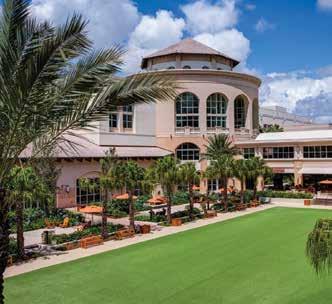





WEDNESDAY, JUNE 4
SEMINAR #1 | 8:00 am – 10:00 am
ASCE 7 Wind Calculations
Greg Keeler

Methods to determine ASCE 7-22 wind loads and required wind resistance for steep- and low-slope roof assemblies. ASCE 7-22 includes changes from the 7-10 and 7-16 editions. | 2.0 Hours G
SEMINAR #2 | 8:00 am – 2:00 pm
CCN’s Contractor Bootcamp: KPI –Managing by the Numbers
Gary Cohen
To scale your revenue for optimum profitability, it’s important to monitor various key aspects of your business. As a business owner, there are numerous details to pay attention to and it’s easy to become overwhelmed. That’s where Key Performance Indicators (KPI) come in. They help measure metrics and improve your business without getting overwhelmed with details and data. This 6-hour





seminar goes into detail on what KPIs you should be tracking and which numbers you need to know to make critical business decisions. | 6.0 Hours – No CE credit
SEMINAR #3 | 9:00 am – 10:00 am
Advanced FRSA-TRI Tile Manual
Paul Oleksak and David Eubanks
The FRSA-TRI Tile Manual is referenced in the Florida Building Code for tile roof installations in 65 Florida counties. How to use the 7th Edition manual with realworld examples. | 1.0 Hour ADV
SEMINAR #4 | 10:15 am – 12:15 pm
Licensing Issues & Contracts
Trent Cotney
Chapter 489 licensing and regulations. Who is exempt, consequences of unlicensed activity and CILB disciplinary actions. Review contract terms: price, scope, notices, time of delivery and more. | 2.0 Hours L&R/BSP

SEMINAR #5 | 10:15 am – 12:15 pm
Metal Roofing: A Closer Look
Bo Copeland
A step-by-step look at metal roofing from both a technical and aesthetic aspect. Product information, building code requirements, proper product recommendations, installation, warranties and more. | 2.0 Hours G
SEMINAR #6 | 12:30 pm – 1:30 pm
Low-Slope ASTM Standards
Brian Chamberlain
Testing and installation of TPO, PVC and KEE materials, systems and assemblies including coverings, cover boards, insulation, securement methods, quality assurance and performance for assemblies and edge metals | 1.0 Hour G
SEMINAR #7 | 12:30 pm – 1:30 pm
Estimating the Right Way – Commercial
John Kenney, CPRC
How do you produce accurate commercial estimates? Isolate improper estimating, evaluate strengths and weaknesses of your team and improve the quality of your bids. | 1.0 Hour BSP
SEMINAR #8 | 1:45 pm – 2:45 pm
Wind Mitigation Methods
Mike Silvers, CPRC
8th Edition Florida Building Code requirements include wind zone areas, insured and ad valorem tax criteria compliance, reroofing, water barriers, fasteners and bracing, retrofitting and more. | 1.0 Hour WMM
SEMINAR #9 | 1:45 pm – 2:45 pm
OSHA Recordkeeping Requirements
Trent Cotney
Identify, complete and maintain required OSHA forms. Which injuries require reporting? Manage the documentation process for defense of OSHA inspections and citations. | 1.0 Hour BSP
THURSDAY, JUNE 5
SEMINAR #10 | 7:00 am – 8:00 am
Understanding Workers’ Comp
Debbie Guidry, CPCU and Alexis Ayala
Understand workers’ comp employer responsibilities, plan benefits, direct and indirect costs, how to calculate premiums, premium mods and credits as well as what to expect during an audit. | 1.0 Hour WC
SEMINAR #11 | 7:00 am – 8:00 am
KPI – Navigating by the Numbers
Gary Cohen
To scale your revenue for optimum profitability, monitor key aspects of your business. Key Performance Indicators (KPI) allow you to analyze business performance without becoming overwhelmed. | 1.0 Hour – No CE credit
SEMINAR #12 | 7:00 am – 8:00 am
Top Five Insurance Issues
Tray Batcher
Insurance issues facing Florida roofing contractors and legislative changes. Addresses general liability, subcontractor and builder’s risk insurance. | 1.0 Hour L&R
SEMINAR #13 | 8:00 am – 11:00 am
BUILDING OFFICIALS & ARCHITECTS PROGRAM
ASCE 7 Wind Calculations
Greg Keeler
Methods to determine ASCE 7-22 wind loads and required wind resistance for steep- and low-slope roof assemblies. ASCE 7-22 includes changes from the 7-10 and 7-16 editions. | 2.0 Hours G
Low-Slope ASTM Standards
Brian Chamberlain
Testing and installation of TPO, PVC and KEE materials, systems and assemblies including coverings, cover boards, insulation, securement methods, quality assurance and performance for assemblies and edge metals. | 1.0 Hour G





THURSDAY, JUNE 5 (Continued)
SEMINAR #14 | 8:15 am – 9:15 am
Ladder & Skylight Safety
Kevin Lindley


OSHA ladder and skylight regulations, training requirements and best practices. Jobsite ladder equipment selection, setup and use. Skylight safety, hazards and proper fall protection equipment. 1.0 Hour WPS






SEMINAR #17 | 9:30 am – 10:30 am
Google’s Silver Bullet: You!
Dan Shurtz
Showing up first on Google’s results page may seem impossible. But there’s a silver bullet: your brand. Build a strong brand to improve organic search, word-of-mouth, revenue and profitability. | 1.0 Hour - No CE credit
SEMINAR #18 | 9:30 am – 10:30 am
SEMINAR #15 | 8:15 am – 9:15 am
Estimating the Right Way – Commercial
John Kenney, CPRC
How do you produce accurate commercial estimates? Isolate improper estimating, evaluate strengths and weaknesses of your team and improve the quality of your bids. | 1.0 Hour BSP
SEMINAR #16 | 8:15 am – 10:15 am
Metal Roofing: A Closer Look
Bo Copeland
A step-by-step look at metal roofing from both a technical and aesthetic aspect. Product information, building code requirements, proper product recommendations, installation, warranties and more. | 2.0 Hours G
Attract & Retain Great People
Marci LaRouech
Delve into the significance of company culture, focusing on its ability to attract and retain top talent. Identify strengths and weaknesses and implement strategies to foster a positive work environment. | 1.0 Hour - No CE credit
SEMINAR #19 | 9:30 am – 10:30 am
Construction Law Updates
Trent Cotney
What construction industry legal issues have changed this year? Includes marijuana usage on the job, OSHA and case law updates regarding contracts, liens, insurance and arbitration. | 1.0 Hour BSP


FRIDAY, JUNE 6



SEMINAR #20 | 7:00 am – 8:00 am
Metal Deck Replacement
Michael Polizzi
Commercial re-roof projects often need to replace the structural metal deck due to rust, weather damage or renovations. How to identify, match, quote and install metal deck. | 1.0 Hour G
SEMINAR #21 | 7:00 am – 8:00 am
Documenting a Roofing Project
Chad Westbrook
Document your roofing projects using best practices. Roofing professionals are now expected to be photographers who correctly document projects to address future performance and legal issues. | 1.0 Hour G
SEMINAR #22 | 7:00 am – 9:00 am
Licensing Issues & Contracts
Trent Cotney
Chapter 489 licensing and regulations. Who is exempt, consequences of unlicensed activity and CILB disciplinary actions. Review contract terms: price, scope, notices, time of delivery and more. | 2.0 Hours L&R/BSP
SEMINAR #23 | 7:00 am – 9:00 am
ASCE 7 Wind Calculations
Greg Keeler
Methods to determine ASCE 7-22 wind loads and required wind resistance for steep- and low-slope roof assemblies. ASCE 7-22 includes changes from the 7-10 and 7-16 editions. | 2.0 Hours G





SEMINAR #24 | 8:15 am – 9:15 am
Wind Mitigation Methods
Mike Silvers, CPRC
8th Edition Florida Building Code requirements include wind zone areas, insured and ad valorem tax criteria compliance, reroofing, water barriers, fasteners and bracing, retrofitting and more. | 1.0 Hour WMM
SEMINAR #25 | 8:15 am – 9:15 am FOREMEN & SUPERINTENDENTS PROGRAM
Safety & Housekeeping
Jim Brauner
Jobsite accidents cost lives, time and money. Get a grip on fall hazards, site safety, demolition, debris removal, what’s trending with OSHA and available training programs. The fee for this course is $25 per person for foremen and superintendents which will be refunded to employer via a $25 gift certificate good for any FRSA product or service except the Foundation Auction. Attendees who pre-register will also receive a special gift bag.
1.0 Hour WPS
SEMINAR #26 | 8:15 am – 9:15 am
Hiring & Retaining Good Employees
Ben Briggs
Prepare employees for long successful careers in construction. The best onboarding practices, the importance of investing in training and how to build engagement for new and existing employees.
1.0 Hour BSP




Register for FRSA’s Convention and Expo online. Sign up with a unique email address, add the events you would like to attend and check out using a credit card.
As always, the Florida Roofing & Sheet Metal Expo is FREE for roofing contractors. Each representative of non-exhibiting manufacturers, distributors and suppliers will be charged a $295 fee and service providers will be charged a $995 fee for entry to the Expo hall.
A badge is required to enter the Expo and an expedited line is available at the Registration Desk for those who register in advance!
FRSA’s Annual Convention and Expo is an educational and networking event for the roofing and sheet metal industries. As we continue to face an ever-changing work environment, FRSA brings you the most relevant and up-to-date seminars on topics that affect your business.
FRSA’s Educational and Research Foundation, CILB Provider #0000910 (select courses), is offering a total of 32 hours of continuing education (CE) credit and 8 hours of seminars without CE credit. All courses are designed specifically for contractors. Our goal is to provide you with the educational tools you need to make your business successful.


FRSA Members receive a 20% discount on seminars at checkout.
SEMINAR TICKETS
Individual Seminars
FRSA Members receive a 20% discount at checkout.
CCN’s Contractor Bootcamp
FRSA Member
FRSA Non-member
$50/per hour
$325 by 5/01/25 | $350 after
$375 by 5/01/25 | $400 after
Tickets to all social events must be purchased individually and include:
Thursday Business Lunch
$60
Thursday Casino Party $125
Ladies’ Program
Thursday | Candle Crafting Workshop
Friday | The Art of Baking Bread
Kids’ Program
$75
$75
NOT A MEMBER? JOIN TODAY!
Contact Kelly Sealander at 800-767-3772 ext. 142 or kelly@floridaroof.com
Wednesday Night | Crazy Balloon Show & Cookie Decorating $50
Thursday Day | Wizards & Lizards Tie-Dye Party $45
Thursday Night | Extreme Video Game Night
$65
Friday Day | Arcade Blitz $50
Sports Tournament Pricing
Clay Shooting Tournament
$125 by 5/01/25 | $175 after Fishing Tournament
$175 by 5/01/25 | $275 after Boat for 6 People
$1,000 by 5/01/25 | $1,400 after Golf Tournament $175 by 5/01/25 | $225 after
must be completed online at:
www.floridaroof.com
Event tickets may be purchased in advance or at the FRSA Registration Desk during the Convention and Expo if available. See the Schedule of Events on PAGES 6 & 7 for FRSA Registration Desk hours. Tickets will be collected at the door for each event, including all educational seminars.


Located at 6000 W. Osceola Parkway in Kissimmee, Florida. FRSA has a special room rate of $185 plus tax for single or double occupancy. Resort fees are included in this discounted rate. The group rate will be available until May 1 or until the room block is sold out, so be sure to book early!
Seminars and all social events are business casual. Please remember to wear comfortable shoes. Meeting room temperatures vary, so you may want to bring a sweater or jacket. Casino Party – Casual tropical attire is encouraged.
Reservations can be made by visiting https://book.passkey.com/go/FRSA2025 and entering 2025FRSA as the access code.



THANKS TO OUR
D.I. Roof Seamers
Direct Metals
H.B. Fuller Construction Adhesives
Sherwin Williams / Uniflex
SRS Building Products
Central Florida Roofing & S/M Contractors Association (CFRSA)
Duro-Last
Petersen | PAC-CLAD
Roof Hugger
Tarco
SPONSORS
Northeast Florida Roofing & S/M Contractors Association (NEFRSA)
Southwest Florida Roofing Contractors Association (SWFRCA)
West Coast Roofing Contractors Association (WCRCA)
ABC Supply
Acrisure
Adams and Reese LLP
Carlisle SynTec Systems
CertainTeed LLC
Certified Roofing Specialists
D.I. Roof Seamers
Drexel Metals
East Lake Metals
FRSA Self Insurers Fund
GAF
Gulfeagle Supply
Handy Distribution
IKO Industries Inc.
Leap
Millennium Metals Inc.
Owens Corning
Petersen | PAC-CLAD
Polyglass USA Inc.
Power Bolt and Tool Inc.
Premier Metal Roofing LLC
Progressive Materials
Sika Roofing
TCParker & Associates
Walker Rep Group

PLATINUM SPONSOR
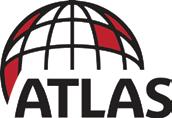





DIAMOND SPONSORS




SAPPHIRE SPONSORS




SPECIAL EVENT SPONSOR
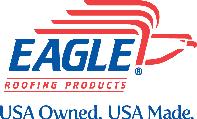


GOLD SPONSORS




EMERALD SPONSORS







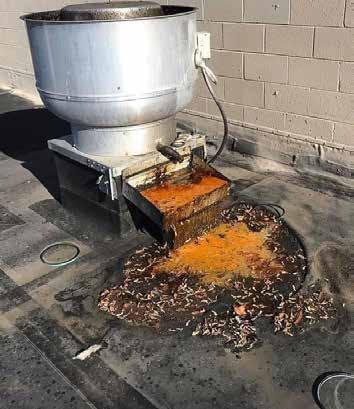


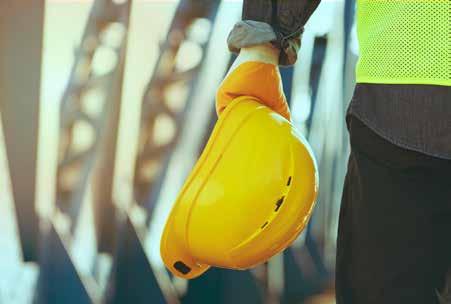

Hailey Dedmon, Shorebird Biologist, Florida Fish and Wildlife Conservation Commission

Many of Florida’s birds are imperiled due to habitat loss and disturbances to natural nesting habitat. Some species of seabirds and shorebirds regularly nest on open sandy beaches but have started nesting on gravel rooftops as a substitute for beach habitat. These rooftop-nesting seabirds and shorebirds are protected by state and federal law, so it is important to recognize their presence and spread awareness about rooftop nesting. Property owners who maintain these rooftops are important conservation partners and we look forward to continuing to work with them to meet their needs while they provide for the needs of the birds.
Species commonly found nesting on gravel rooftops are least terns, roseate terns, black skimmers, killdeer and American oystercatchers. Nesting season throughout Florida can vary but typically occurs March 1 through September 1.
Least terns, roseate terns, black skimmers and other seabirds nest in large groups known as colonies. Black skimmers and least terns can often be found nesting among each other. Least terns have become highly adapted to nesting on alternative habitats and
approximately 50 percent of the statewide nesting population nests on gravel rooftops. Killdeer and American oystercatchers are shorebird species. Shorebirds are solitary nesters, meaning a single pair will nest together and defend a small territory from other birds.
Both seabird and shorebird pairs construct nests by simply working a shallow depression or scrape into the loose sand or gravel on the rooftop. The female then lays the eggs. Males and females both tend to the nest, taking turns incubating the eggs. Hatch times vary depending on species and range anywhere from 21 to 27 days. Once the chicks hatch, they are highly mobile within two to three days and will roam from the nest. These


mobile chicks may accidentally run off the rooftop if the building doesn’t have parapets or chick fencing to prevent falling. If you happen to find a chick on the ground, please notify managers or staff of the building immediately. The managers or staff of the building should contact their regional Florida Fish and Wildlife Conservation Commission (FWC) shorebird contact so that trained staff and volunteers can assist with returning the chicks to the roof. Chicks must be returned to the roof carefully since colonies are very sensitive to disturbance. It can take anywhere from 19 to 37 days, depending on the species, for these chicks to be able to fly.
When seabird colonies are disturbed, they will flush into the air, often loudly vocalizing and begin dive-bombing to defend their nests and chicks. American oystercatchers are very territorial; once a pair establishes a territory, they will defend that area from other pairs or any perceived threat. Shorebirds, such as oystercatchers, will also exhibit a behavior when disturbed called a “broken wing display” where they feign injury to try and lure a potential predator away from the nest or chicks. When seabirds and shorebirds are flushed, nests and chicks are exposed to predators such as crows or gulls, as well as harsh weather conditions that may cause eggs to spoil and chicks to perish. Additionally, chicks that are not yet able to fly may be scared off the rooftop and fall to the ground, leaving them exposed to predators. Preventing disturbance to these birds is vital for their survival.
If birds are present on a rooftop, any non-essential maintenance or repairs that disturb the nesting birds should be postponed until after the breeding season. If essential maintenance or repairs are necessary during the nesting season, we recommend the property owner apply for an incidental take permit. More information on how to apply for a permit can be found at www.floridaroof.com/roofbirdspermit. Any harassment or harm, even unintentional, could be considered

“take” under State Law, Chapter 68A-27.003, Florida Administrative Code and is therefore unlawful.
Despite challenges, shorebirds and seabirds have been able to adapt to the many changes humans have made to coastal landscapes. The importance of rooftop colonies continues to grow statewide as coastal development reduces the amount of suitable beach nesting habitat. Gravel rooftops are an invaluable resource to our seabirds and shorebirds and with continued efforts, they will remain productive nesting sites for years to come.
Thank you for your support and patience during the 2025 shorebird and seabird breeding season. Please contact us with any questions or concerns. You can find your regional shorebird contact information at www.floridaroof.com/roofbirds.
Hailey Dedmon is the Northeast and North Central Regional Shorebird Biologist with the Florida Fish and Wildlife Conservation Commission (FWC). FWC regional shorebird biologists work collaboratively with Florida Shorebird Alliance partners to achieve conservation goals for state-designated threatened shorebirds and seabirds. They collaborate with FWC’s Division of Law Enforcement on proactive patrols in nesting areas and engage with local partners on habitat management. FWC regional shorebird biologists also aid in monitoring priority nesting areas throughout the state, provide subject matter expertise and conduct education and outreach within local communities.
Adrian Robledo, Director of Sales, ICP Group
Tile roofs are a common sight throughout Florida and ensuring their ability to withstand the state’s weather conditions depends on sourcing the right securement and underlayment technologies.
Throughout the Florida housing market, concrete and clay tile roofs are a popular option for both their aesthetic benefits and their ability to withstand storms and severe weather more readily than many other types of roof coverings. For roofing professionals working in the state, it’s beneficial to be knowledgeable about tile roofs, including best practices for installation and maintenance.
To those ends, the choice of securement method can make an impact. While mechanical fastening has long been common in roof tile applications, polyurethane foam adhesives – which adhere tiles to the underlayment that is attached to the roof deck, without the need to penetrate it in most cases – have been shown to deliver even higher value. Indeed, roofs utilizing high-performance adhesives can achieve some of the highest possible wind uplift ratings, making them highly advantageous for extreme weather locales like Florida and other coastal and wind prone areas.
In this article, we’ll explore what you need to know about properly installing tile roofs with polyurethane foam adhesives, including the benefits of a highperformance underlayment, key differences between single-component and two-component roof tile adhesive options, the importance of proper training for applicators and more.
Before the roof tiles themselves can be adhered, it is important to select an underlayment system that meets the required design pressures and code approvals of the project location. These components are available in a wide variety of applications and options that provide essential protection for the building envelope beneath the primary roof covering – roof tiles, in this case. Some characteristics to look for when selecting an underlayment technology include:
Compatibility properties. There are various applications for adhering underlayment to a roof deck. Contractors should ensure that the underlayment has been tested and approved for use with foam adhesive products. As direct-to-deck roof applications are growing in the southern part of Florida, it is also important to ensure that the underlayment meets the required design pressures for this application. Directto-deck applications have high performance values and can also help in reducing additional material and
labor costs. The underlayment should address all essential areas of the roof and ensure quick, clean, and easy lapping of rolls as well as water tightness.
Physical and Performance Characteristics. When selecting an underlayment, various performance differences can aid in installation and underlayment life expectancy. Thickness, tear resistance, adhesion, water resistance, slip resistance, roll weight, temperature resistance, walkability and additional UV exposure all play a vital role in choosing the right underlayment for your project.

Advanced Technologies. As underlayment technologies evolve, staying on top of technology and offering advanced products is important. For example, some high-performance underlayment technologies available today are products made without excess filler, providing outstanding protection without extra weight, enabling workers to get the job done more easily. Another crucial technology is addressing all critical lap edges and joints for seamless and instant bonding.
Once you’ve selected your underlayment, it’s time to choose an effective adhesive. First, it’s important to understand the difference between single-component and two-component spray foam adhesive systems. In single-component adhesive products, all chemical and raw material components are combined and the adhesive moisture-cures when dispensed. Two-component adhesives’ adhesion chemistry and other materials are kept separate (A-side/B-side); the chemical reaction begins once the two components are mixed together in the application assembly nozzle. These components are fed through hoses and are combined at the point of application.
Both options will provide high levels of performance but there are some differences that may make one more suitable for a given application than the other. For example, two-component polyurethane adhesives have been shown to maintain the highest available levels of wind uplift performance. Depending on the paddy size, tile profile, paddy placement and gram weight, a properly installed (per manufacturers
installation instructions) two-component adhesive systems have the ability to withstand a category 5 hurricane.
For these reasons, two-component adhesives have been widely used throughout Florida, where hurricane resistance is one of the top priorities for building and construction professionals. Twocomponent options can also deliver additional tile support, contributing to higher break strength and overall long-term durability. Depending on the roof pitch, some twocomponent systems can also eliminate the need for having thousands of screws, nails or tie-wire penetrations on the roof deck which can create roof damage and leaks.
Single-component options serve their purposes as well. These options also maintain high levels of performance and are primarily advantageous in terms of ease of use. Applicators are able to move around the roof area easily since these come in handheld, userfriendly cylinders.

Getting the most from roof tile adhesives doesn't just depend on the products themselves but on proper training and installation. Building officials, inspectors and municipalities often require roofing contractors to have been trained in proper product use by the manufacturer. Once again, this is particularly true in areas prone to extreme weather like Florida. Code officials will want to ensure that construction projects completed with adhesive products are being performed by professionals who’ve been properly trained. Contractors interested in using roof tile adhesives should seek out manufacturers that provide productspecific training and certifications.

Additionally, multiple applicators equipped with individual cylinders can help complete a job more quickly. Singlecomponent systems’ portability also lends itself to easier application around hips, ridges, cut pieces and trim tiles. Singlecomponent systems can also be applied to damp substrates, making it easier to perform work following rain or without waiting for morning dew to evaporate.
Whether you choose single- or two-component adhesive systems, it’s also increasingly important to check the sustainability profile of such products. Because spray foams require the use of a blowing agent, it’s worth checking to ensure that such agents in your selection have low global warming potential or HFO product offerings (environmentally friendly); your supplier should be able to advise.
Overall, roof tile adhesives and underlayment systems offer a wide range of benefits for tile roof applications. Products that have been formulated for the highest levels of performance and ease of use can contribute to more reliable and more durable roofs – even in the most extreme weather environments – while enabling professionals to work more efficiently and boost their bottom line. FrM
With over 20 years of roof tile and adhesive industry experience, Adrian Robledo is Director of Sales for ICP Group and oversees the brand’s APOC Polyset Steep Slope polyurethane roofing adhesives. He is dedicated to helping roofing professionals understand the value of proper training and tile installation methods for concrete and clay roof tiles. His passion, commitment, technical knowledge and service to his customers have helped him build a solid reputation as one of the industry leaders in the residential roofing market. To learn more about roofing tile adhesives, visit www.APOC.com. Adrian can be reached at arobledo@icpgroup.com.
Rodrigo Medina, Business Unit Manager-Roofing, Santafé Tile Corporation

As a roofing contractor in Florida, selecting the best roofing material for your projects is crucial for ensuring durability, aesthetic appeal and long-term value for homeowners. Clay roof tiles have long been an excellent choice in regions with harsh weather conditions due to their proven performance. Clay tiles offer a combination of durability, energy efficiency, low maintenance and timeless beauty.
This article explores the advantages of clay roof tiles and explains why they make a good investment for Florida homes.
One of the most significant advantages of clay roof tiles is their exceptional durability. According to NRCA, clay tiles can last 50 years or more with proper maintenance. In contrast:
■ Metal roofs can last many decades but they are susceptible to denting, corrosion and rust in coastal environments.
■ Concrete tiles are durable but can be prone to cracking and color fade over time, especially under extreme weather conditions.
Florida’s climate presents unique challenges such as hurricanes, heavy rain and intense sun exposure. Clay tiles excel in these conditions, because they are:
■ Fire-resistant
■ Highly resistant to water absorption
■ Less likely to be damaged by strong winds.

Energy efficiency is a critical factor for homeowners in Florida’s hot climate. Clay roof tiles provide natural insulation, helping to regulate indoor temperatures. According to the U.S. Department of Energy, roofing materials that reflect sunlight can significantly reduce cooling costs. The Cool Roof Rating Council also supports the premise that clay tiles contribute to a cooling effect, reducing reliance on air conditioning.
Metal roofs reflect sunlight but can absorb heat quickly, making homes hotter in the evening. Maintenance and repairs can become very costly. Concrete tile roofs retain heat during the day and cool during the night, affecting cooling costs.
Clay roof tiles have a timeless, high-end appearance that enhances a home’s curb appeal and resale value. They are available in various colors and finishes, from classic terracotta to modern matte tones that complement Mediterranean, Spanish and contemporary home designs. Clay tile roofs are often associated with luxury homes and upscale neighborhoods.
In contrast, metal roofs are more commonly used in industrial or modern designs but may not blend well with traditional architecture.
According to the National Association of Realtors, homes with high-quality roofing materials like clay tiles tend to sell faster and at higher prices than those with asphalt or concrete roofs.
To help roofing contractors and homeowners make an informed decision, the table below offers a direct comparison of how clay tiles stack up against metal and concrete tile roofing and highlights why clay roof tiles
are a well-rounded choice, offering both performance and aesthetic advantages over metal and concrete tile roofs.
In today’s environmentally conscious market, sustainability is a key factor in material selection. Clay roof tiles are one of the most eco-friendly roofing options available because they are made from natural, abundant materials and require less energy to produce than metal or concrete. According to the EPA, clay roofing tiles are 100 percent recyclable, reducing landfill waste. Unlike synthetic materials, clay tiles do not emit harmful VOCs.
In contrast, metal roofs require mining and smelting, which leave a high carbon footprint. Concrete tile production may be a considerable source of CO2 emissions. For eco-conscious homeowners and contractors, clay tiles provide a sustainable, long-lasting roofing solution with minimal environmental impact.
While metal and concrete roofs have their own advantages, clay roof tiles may be the best option for many Florida homes. For Florida roofing contractors, offering clay roof tile solutions allows you to provide homeowners with long-term value, energy efficiency and unmatched beauty. By staying informed about
Feature Clay Roof Tiles Metal Roofs Concrete Roofs
Durability
Weather Resistance
Energy Efficiency
Aesthetic Appeal
Maintenance
Sustainability
Cost Over Time
50-plus years, resists moisture, fire and wind
Ideal for hurricanes, high winds and heavy rain
Natural insulation, reduces cooling costs
Elegant, timeless look for high-end homes
Low maintenance, no rust or corrosion
100% recyclable, made from natural materials
Higher upfront cost but long lifespan and minimal repairs
Can last decades but prone to denting and corrosion
Good for high winds but can be noisy in storms and corrode in coastal areas
Reflective but absorbs heat
Modern look, limited to certain styles
Requires rust prevention, repainting
Recyclable but requires energy-intensive production
Lower upfront cost but requires maintenance and repainting
30-plus years but can crack over time
Heavy and requires strong structures to support weight
Retains heat and cold, can affect A/C costs
Functional but less visually appealing
Prone to cracking, may require cleaning, sealing or painting
High energy production cost
Mid-range cost but require maintenance

local building codes and educating clients on the benefits of clay tiles, contractors can position themselves as leaders in premium roofing solutions.
When comparing clay roof tiles, metal and concrete roofs, clay tiles offer the best balance of durability, energy efficiency and aesthetic appeal. Their ability to withstand Florida’s harsh weather conditions, including hurricanes, intense sunlight and heavy rains, makes them an ideal roofing solution for homeowners seeking long-term value and protection.
Beyond their strength, clay tiles naturally regulate indoor temperatures, reducing cooling costs in Florida’s warm climate. Their timeless beauty and curb appeal enhance property values, making them a preferred choice in high-end and luxury markets.
Additionally, their eco-friendly composition and recyclability make them a more sustainable roofing option compared to energy-intensive metal and concrete alternatives.
For roofing contractors, offering clay tile roofing ensures clients receive a high-quality, low maintenance and visually stunning roofing system.
While metal and concrete roofs have their merits, clay tiles can outperform them in key areas that matter most to homeowners
– longevity, efficiency, beauty and sustainability. For Florida homes, clay roof tiles are not just a smart choice – they may be the best investment for the future.
Rodrigo Medina is a distinguished business leader with deep expertise in roofing materials, sustainable construction and international business development. As the Business Unit Manager–Roofing at Santafé Tile Corporation, he plays a key role in driving innovation and expanding market reach. His leadership has been instrumental in advancing high-performance clay roof tiles, ensuring superior durability, energy efficiency and sustainability in modern roofing solutions. Rodrigo holds an MBA in International Management with a Finance Specialization from Thunderbird School of Global Management and a Postgraduate Diploma in Digital Business from MIT and Columbia Business School.



Tom Parker, President, TCParker & Associates
Well designed and engineered products are critical to the construction industry and particularly the Florida roofing industry. The unique combination of environmental challenges in Florida has driven the creation of very specific products to handle the high wind events we experience. However, the significant investments made in development, testing and market introduction of these high-performance products are all for naught if the product is not installed correctly.
Our industry further recognizes the importance of proper selection and installation of these highperformance products by adding a layer of thirdparty regulatory oversight known as permitting and the subsequent inspecting of the project. While day to day interactions between inspectors and installers can at times be tense, it is important to recognize that both parties (hopefully) share the same goal – ensure that the roof being installed will perform as designed to keep the homeowner secure and dry.
As a manufacturer of roof tile adhesive, we recognize the importance of clear instructions and training to the performance of the overall roof system. To that point, the product approvals for all roof tile adhesives require that the installers are factory trained and certified on the product.
In the 13 years I’ve been involved in the Florida roofing industry, it became apparent that an opportunity existed to make it easier for both the installer and the inspector to ensure that our roof tile adhesives
are installed properly. We began by updating our instruction manual with clearer drawings and more specific instructions. This carried into our Florida Product Approvals utilized in the vast majority of Florida counties. However, an opportunity remained in the High Velocity Hurricane Zone (HVHZ) with the Miami-Dade tile system NOAs.

As many who work in the HVHZ know, not only do the components need to have product approvals but each tile system also must have its own lab tested approval or NOA. The tile NOA’s are used in the permitting process where the required uplift for a specific roof is calculated and then compared against the uplift delivered in the lab testing. As manufacturers, we have several configurations and amounts of adhesive listed with different uplift values. It can be confusing in the field, for both installers and inspectors, to ensure that the correct system is being used. To that end, footnotes are added to the tile NOA table with the intent on clarifying these requirements.
Table 5: Attachment Resistance Expressed as a Moment Mf (ft.-lbf) for Two Paddy Adhesive1 Set Systems
Villa 900 Concrete Tile
DuPont de Nemours, Inc.
TILE BOND Roof Tile Adhesive
DuPont de Nemours, Inc.
TILE BOND Roof Tile Adhesive
ICP Adhesives and Sealants, Inc.
ICP Adhesives Polyset AH-160
DAP Foam, Inc.
Touch ‘N Seal StormBond 2
Two-Component Polyurethane Roof Tile Adhesive
1. See manufacturer component approval for installation requirements. See foam adhesive manufacturer’s component aooroval for installation requirements.
2. TILE BOND Roof Tile Adhesive one-component foam, minimum weight per paddy 8 grams. *See note below*
3. Polyset AH-160 two-component foam, minimum weight per paddy 8 grams.
4. Touch ‘N Seal Storm Bond 2 Two-Component Polyurethance Roof Tile Adhesive two-component foam, average weight per paddy 8 grams, two component foam.
5. TILE BOND Roof Tile Adhesive one-component foam placement of minimum weight 16 grams per paddy.
1. See manufacturer component approval for installation requirements. 8
Historically, the measurement of the correct amount of foam has been grams. I suspect this goes back to the beginning when two component adhesives were introduced. These require a small food scale as part of the calibration process, so utilizing grams may have begun with that. This is not the case with single component adhesives. It seems to me that grams are not a practical measure, especially on a roof. We explored the idea of using contact area as the key measure. This can easily be measured in the field. A tile can be removed right after being set in foam and the contact area of the adhesive to the tile measured.
Last fall, we presented this information to the Miami-Dade product approval department with support of the Miami-Dade inspection department. We made a number of recommendations regarding the use of contact area and the information presented in the NOA.
I’m happy to report that Miami-Dade is now publishing the contact area of the foam to the tile in the same table with the grams of foam in the tile NOA. These updates will be made as the tile NOAs are revised. I believe this is a major step forward in ensuring that a tile roof is installed properly the first time. It provides a simple, measurable specification, that both the installer and inspector can agree upon, that ties directly to the lab testing data. On the previous page are examples of the previous table from a tile NOA. Above is the revised table from a recent NOA update.
■ The contact area is clearly stated with its corresponding uplift value.
■ Where there are “system” names of the adhesive placement, those have been added and
correspond to the adhesive manufacturer's installation instructions. For example, ICP uses the terms “large paddy” and “medium paddy.” For Tile Bond, we use “interdependent” and “independent.”
The footnotes have been simplified to just refer the installer to the adhesive product approval that contains pertinent information from the manufacturer on how to install the product. The component product approval further refers the installer to the manufacturer’s installation manual. This is in place of attempting to add the installation details to the footnotes.
And if it couldn’t get any better, there are two proposed revisions from Miami-Dade County for the 2026 code cycle (12066 & 12067) that add the requirement of contact area measurement to the lab testing requirements for TAS 101-95, which is the test protocol used for tile system uplift testing.
I’d like to thank the folks at Miami-Dade for working with us on these revisions. Over the last few years, we have established a productive working relationship that is focused on the goal of ensuring that tile roofs are installed properly. When groups can find common ground and stay focused on this, great things can happen that benefit the industry and homeowners.
FrM
Tom Parker is the President of TCParker & Associates, a manufacturer’s representative for Dupont Tile Bond Roof Tile Adhesive. He opened his agency 13 years ago after a 33-year career at The Dow Chemical Company. Tom is a Registered Professional Engineer, is a member of TRIA and a member of FRSA serving on the Codes Committee. Table 5: Attachment Resistance Expressed as a Moment Mf (ft.-lbf) for Two Patty Adhesive1 Set Systems Tile Profile: Villa 900 Concrete Tile
FLORIDA ROOFING MAGAZINE
FRSA SERVICES CORP.
RE: Ensuring tile roof projects meet code
Tile roof installations utilizing roof tile adhesives have specific requirements for the placement and minimum amounts of adhesive that need to be installed in order to meet the product approval and, in doing so, meet the Florida Building code.
Through onsite training and troubleshooting, we believe that there are a concerning number of cases where significantly less than the required amount of foam adhesive is being installed and that due to the local inspection practices this is going undetected. Where only a final visual inspection is performed, there is no way to ensure the required amount of foam adhesive has been applied under the tile just from the code official’s inspection.
It is possible that half the foam adhesive is installed and the other half is resold. This concerns us because these products have a shelf life and contractors may be purchasing expired product.
On this page are several Facebook Marketplace listings for Tile Bond roof tile adhesive and APOC Polyset AH-160 kits at a fraction of the retail price.
It is possible that these are simply one-off situations where a few extra tanks are sold. However, there have been postings similar to this consistently on Marketplace for over a year. We also hear from suppliers, especially in Miami, lamenting the loss of business on projects that they have developed to “other sources” and “private individuals.”
We are more concerned that there are homeowners along the coast that believe they have the secure roof they paid for where inadequate adhesive may have been used. This will likely not surface until the next major wind event and, if there is a failure, who will they seek out? Not the inspector, most likely the roofer whose name is on the permit.
Our advice to roofing contractors: When using any of the foam adhesives on the market, ensure that the roof tile adhesive you paid for and provided for the installation is installed per the manufacturer’s instructions and the product approvals.
FRSA highly recommends purchasing your adhesive products from an authorized distributor.





Reed Hitchcock, Executive Vice President, Asphalt Roofing Manufacturers Association
Asphalt shingles have provided an effective, affordable and versatile roofing solution for decades and continued innovation will ensure it stays that way for generations to come. Rumors of the demise of asphalt shingles in Florida are greatly exaggerated.
Asphalt shingles provide a great, cost-effective option for consumers and in recent weeks, groups with varying interests and motivations – including those who sell roofing products that compete with asphalt shingles – have attempted to undermine their efficacy with comments not based in fact. This was a result of some broad statements from Florida’s Insurance Commissioner, Michael Yaworsky. These groups are understandably attempting to leverage such statements to increase their market share against the predominant residential roofing material in the state.
The actual situation in Florida is far more complex and nuanced than these interests would have you believe. There are indeed challenges with roofing in the state but these challenges are not unique to asphalt roofing, nor are asphalt shingles the principal cause. Given that asphalt shingles protect between 70 to 75 percent of homes in the state, it is logical that a severe weather event would result in more damaged asphalt shingle roofs than those covered by other materials.
The entire roofing industry faces the challenge of continuously improving product performance and the asphalt shingle manufacturers are actively participating in collaboration with roofing contractor groups, code officials and other stakeholders. The Asphalt Roofing Manufacturers Association (ARMA) has proposed enhancements to hip and ridge shingle wind resistance and better attachment at roof edges for asphalt shingle systems in the current revisions of the Florida Building Code, in addition to hip and ridge improvements and better drip edge flashing at eaves and rakes. The industry supports efforts to codify common installation practices, providing secondary water penetration protection.
Over the years, the Florida asphalt shingle market has shifted to modern, high-performance laminated shingles, now representing approximately 90 percent of market sales. Today’s asphalt shingles differ significantly from those installed decades ago and undergo rigorous testing to meet wind uplift, hail resistance and fire ratings. Furthermore, many ARMA member companies are closely engaged in improving the ASTM standards with which our products are required to comply and creating new standards where voids exist.

Beyond basic mathematics, several other factors must be considered. Over the past few decades, building codes and product technologies have advanced significantly. Many older roofs were installed before these advancements were introduced and therefore may not comply with the latest building codes. Many roofs installed post-storm are not installed by qualified professionals, making them more vulnerable to damage during severe storms.
Additionally, not all roofing materials are equal. Roofing systems vary from high-end to budget systems. The optimal material for a specific home in a particular region may not necessarily be the cheapest or the most expensive but should be evaluated as part of a complete system. Homeowners should be educated about the roofing system that best suits their home, ensuring it fits their budget, aesthetics and environment. Observations from post-storm damages indicate that numerous asphalt shingle roofs remain intact after severe storms, while catastrophic failures can occur with any roofing material.
Asphalt shingles continue to dominate the roofing market in Florida, with no indication of decline. The asphalt roofing industry remains agile, capable of delivering reliable, cost-effective, high-performance roofs to homeowners following major storms. Other systems cannot match this level of service. Asphalt shingles are the leading roofing system in North America for various reasons, including cost-effectiveness and an array of aesthetic options and they remain a steadfast choice.
FrM
Reed Hitchcock is the Executive Vice President of the Asphalt Roofing Manufacturers Association (ARMA), that represents North America’s asphalt roofing manufacturing companies and their raw material suppliers. ARMA includes the majority of North American manufacturers of asphalt shingles and asphalt low-slope roof membrane systems. Committed to advancing the asphalt roofing industry, ARMA plays a pivotal role in promoting asphalt roofing to industry professionals and the public. For more information about ARMA, visit asphaltroofing.org. This story was originally published on RoofersCoffeeShop.






Gary A. Cohen, Vice President, Certified Contractors Network
In the world of home improvement sales, success isn’t about delivering a perfect sales pitch – it’s about building trust, understanding customer needs and offering solutions that genuinely improve their lives. Too often, sales reps focus on selling instead of helping. The truth is the most successful sales professionals aren’t pushing products – they’re guiding homeowners toward informed decisions.
Traditional sales tactics rely on persuasion and pressure, which can leave customers feeling uneasy or skeptical. Homeowners today are more informed than ever. They don’t want to be “sold” – they want to be heard, understood and advised. That’s why the key to closing more deals is shifting from a sales-first mentality to a customer-first approach.
A successful sales conversation isn’t about what you want to sell – it’s about what the customer needs. Instead of talking at prospects, effective sales reps ask the right questions, listen intently and provide solutions that align with the homeowner’s specific concerns.
Closing a sale is not a one-time event, it’s the start of a long-term relationship. Homeowners are far more likely to buy from someone they know, like and trust. That trust isn’t built through flashy presentations; it’s built through sincerity, transparency and problem-solving.
■ Ask before you offer – Start with open-ended questions that uncover the homeowner’s true concerns.
■ Listen more than you talk – Pay attention to what’s really driving their decision-making.
■ Educate, don’t pitch –Provide expert insights that empower them to make the best choice.
■ Offer tailored solutions – Show how your product or service directly addresses their unique needs.
■ Be a guide, not a salesperson – Customers should feel like you’re helping them, not pressuring them.

Many sales reps lose deals because they push too soon or they wait too long. The best closers understand timing. Instead of forcing a decision, look for natural buying signals:
■ Increased engagement (asking detailed questions, showing excitement)
■ Expressed interest in specific features or benefits
■ Positive feedback about your product or service
■ Concerns about missing out on an opportunity (FOMO).
When these signals appear, guide the conversation toward the next steps. Closing isn’t about “getting the sale,” it’s about making it easy for the customer to say yes.
Winning more business doesn’t just happen in the sales department – it’s the result of a wellorchestrated experience across multiple teams. From marketing and call centers to customer service and production, everyone plays a role in making the sales process seamless.

A strong sales culture ensures that:
■ Marketing gen erates highquality leads.
■ Call centers set clear expectations before the in-home consultation.
■ Sales reps deliver a consistent, structured presentation.
■ Customer service and production teams reinforce trust post-sale.
One of the biggest mistakes companies make is allowing each sales rep to “wing it.” A proven, structured, consultative sales process ensures every customer gets the same high-quality experience, every time. Every sales rep should be following the same framework that prioritizes:
■ Building rapport and trust from the start.
■ Diagnosing pain points like a doctor before prescribing solutions.
■ Educating and advising rather than hard selling.
■ Closing naturally based on timing and readiness.
The most successful roofing sales professionals don’t sell; they solve. They don’t pressure; they empower.
And they don’t just chase one-time transactions: they build lifelong customer relationships. If you want to increase your close rate, stop focusing on “making the sale” and start focusing on earning the customer’s trust. When you do that, closing more sales becomes the natural outcome of a strong, customer-centric approach.
FrM
Gary A. Cohen is Executive Vice President of Certified Contractors Network (CCN) and is responsible for the day-to-day operations of the company. CCN is the leading comprehensive training, coaching and networking membership organization in North America. Gary is also a 30-year veteran of the home improvement industry, spent 11 years at the Robert H. Smith School of Business at the University of Maryland as a Professor of Business and served four years as Associate Dean of the business school. Gary has been a certified leadership coach for the past 18 years. His email address is gary@contractors.net.
FRSA partners with CCN to provide monthly business webinars for members. Check Roof Flash for links to register for seminars. CCN will also present a Contractor Bootcamp, KPIs – Managing by the Numbers during FRSA’s Convention & Expo, June 4-6.
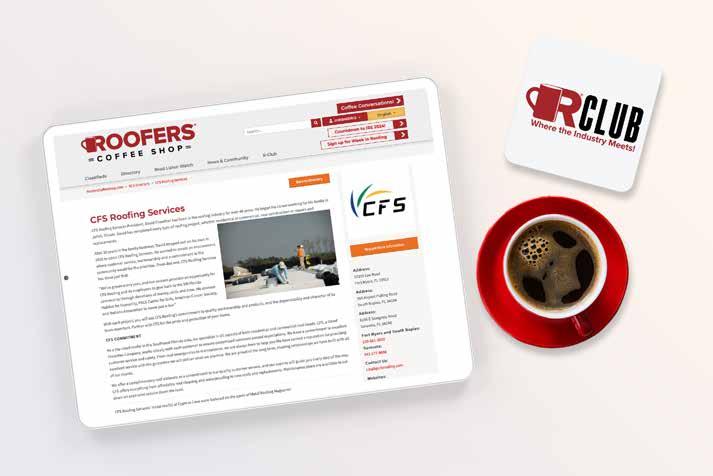

Kevin Lindley, Safety Consultant, FRSA Self Insurer’s Fund
Forklifts are indispensable in warehouses, construction sites and manufacturing facilities but they also pose significant risks if not operated safely. Implementing proper forklift safety protocols can prevent accidents, injuries and fatalities. Understanding key safety principles and best practices is crucial for all forklift operators and workplace personnel.
Forklifts are powerful industrial vehicles that can cause severe injuries if mishandled. Common forklift-related accidents include tip-overs, collisions and falling loads. By prioritizing safety, businesses can minimize workplace hazards and protect employees from harm.
Proper training and certification – OSHA guidelines require all operators to have training and certification and we recommended that operators carry physical certification cards on them for verification of training and certification at all times.
Pre-operational inspections – Before use, inspect forklifts for mechanical issues, such as malfunctioning brakes, steering problems or hydraulic leaks. All inspections must be documented and available upon request.
Wearing safety gear – Appropriate safety equipment, including high-visibility vests, helmets and steel-toe boots, should be worn by operators. Forklift operators are not required to wear hard hats inside an operating cab, if the cab is covered. However, the operator needs to wear his hard hat when exiting the equipment, especially if materials are above head level.
Load management – Ensure loads are balanced, properly secured and within the forklift’s weight capacity to prevent tip-overs.
Safe speed and maneuvering – Adhere to speed limits, avoid sudden turns and exert caution when navigating through tight spaces, especially when entering blind spots, intersections or corners.
Workplace awareness – Pedestrians should be aware of forklift movements and operators should use horns and lights to signal their presence. Pedestrians always have the right of way; operators are responsible for looking out and stopping for pedestrian traffic. Proper parking and shutdown procedures – When not in use, forklifts should be parked on level ground, with brakes engaged and keys removed.
Propane safety – Wear proper personal protective equipment when exchanging propane tanks. Propane cylinders must be stored in a location where they are unable to be struck or tipped over and must remain in an upright position. Propane tanks shall be placed on the forklift correctly and secured on the vehicle at all times.
Overloading – Exceeding the forklift’s capacity can lead to instability and tipping.
Blind spots – Limited visibility can result in collisions with pedestrians or obstacles.
Poor floor conditions – Wet, uneven or cluttered floors increase the risk of accidents.
Improper use of attachments – Using incorrect or unapproved attachments can compromise the forklift’s balance and safety.
Forklift safety is a shared responsibility that requires proper training, vigilance and adherence to safety protocols. By fostering a culture of safety, businesses can reduce workplace accidents, enhance productivity and ensure a secure working environment for all employees. Prioritizing forklift safety ultimately leads to a more efficient and hazard-free workplace.
FRSA’s Self Insurers Fund Safety Consultants are able to provide insured members with forklift training and certification. Please contact your safety representative to coordinate the required training for employees who operate equipment in the warehouse or on the jobsite.
Workers’ comp rates are the same no matter which insurance company insures your business. At the FRSA-SIF, discounts are available for a drug-free workplace with the possibility of yearly dividends. Together with discounts, free employee training and assistance with OSHA inspections, you can’t beat the coverage the FRSA-SIF can offer. For more information, please contact Alexis Ayala at 800-767-3772 ext. 206 or by email at alexis@frsasif.com.
THE KEY TO A RELIABLE, PROTECTED STEEP-SLOPE ROOFING SYSTEM IS ITS UNDERLAYMENT
SELF-ADHERED CARRIERLESS ICE & WATER HIGH TEMP UNDERLAYMENT


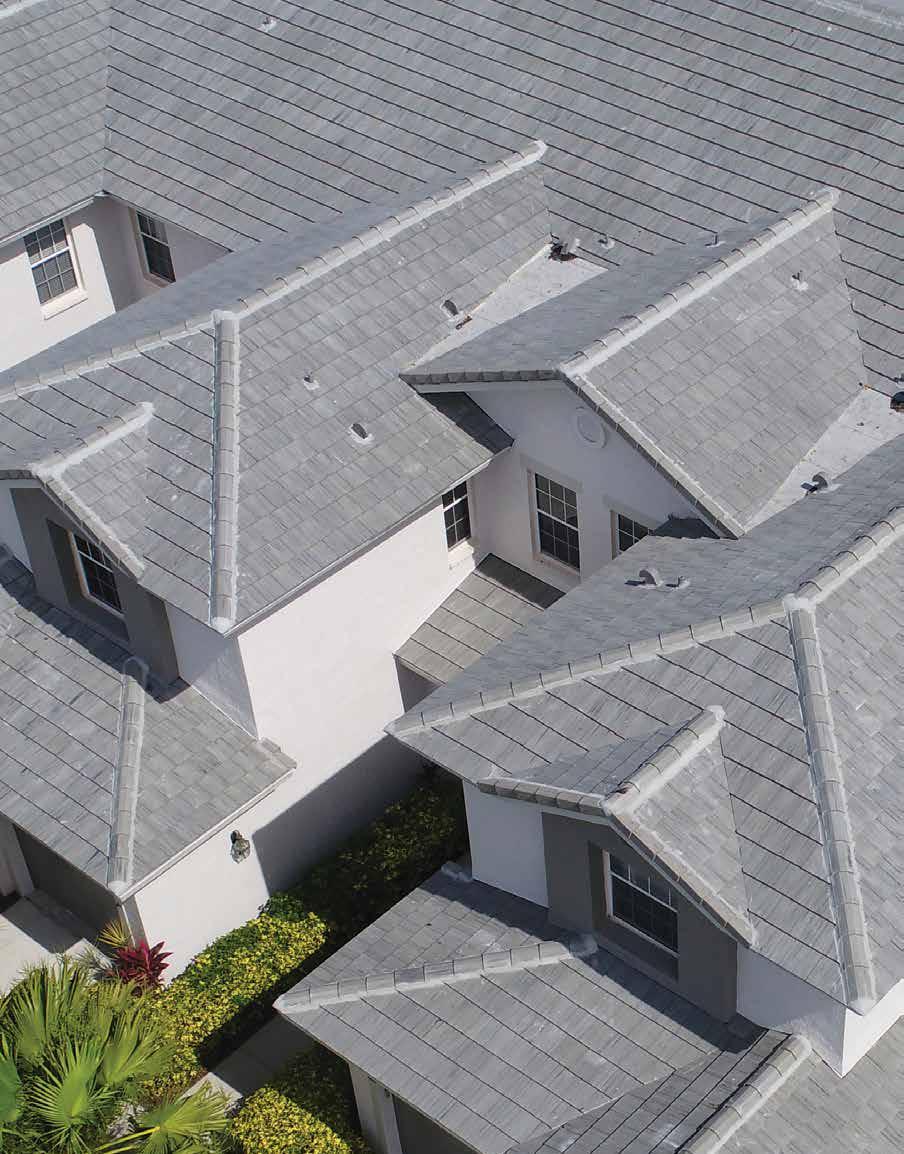


THE EXPERTS IN METAL ROOFING ABOVE AND BEYOND THE ROOF
On-Site roll forming
Fast Deliveries
Free Metal Quotes by EZtimate
Military and first responder discounts
Florida Product Approvals or Miami-Dade NOAs on all products
Wide selection of panel systems – over 70 different options
6040 Old Dixie Highway, Vero Beach, FL 32967
2836 NE Waldo Road, Gainsville, FL 32609
2160 SW Poma Drive, Palm City, FL 34990
99450 Overseas Hwy, Key Largo, FL 33037
